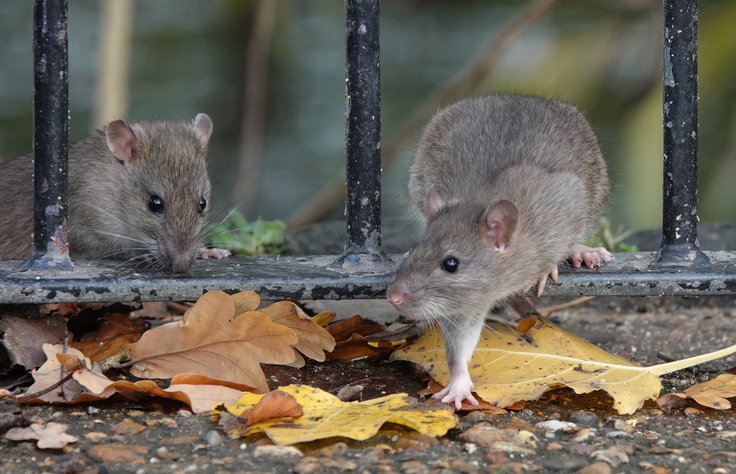How Do Exterminators Get Rid of Bed Bugs?
Exterminators employ a multifaceted approach to eradicate bed bugs, combining heat treatment, chemical treatments, and Integrated Pest Management (IPM). Heat treatment involves raising room temperatures to at least 120°F to kill bed bugs and their eggs. Chemical treatments use EPA-approved insecticides targeting different life stages of bed bugs, often requiring multiple applications. IPM combines these methods with physical removal, such as vacuuming and steaming, and educational strategies for long-term prevention. This comprehensive approach ensures effective and safe elimination of bed bugs from infested areas.

- What are the Signs of a Bed Bug Infestation?
- The Battle Against Bed Bugs: A Closer Look at Extermination Techniques
- Heat Treatment: A Closer Examination
- Chemical Treatments: A Deeper Dive into Exterminator Arsenal
- Integrated Pest Management (IPM): A Comprehensive Approach to Bed Bug Control
- The Human Side of the Story: Beyond the Physical Infestation
- FAQs about Strategies for Eliminating Bed Bugs
What are the Signs of a Bed Bug Infestation?
Physical Signs
- Small blood stains on bedding.
- Dark or rusty spots of bed bug excrement on sheets, mattresses, and walls.
- Bed bug fecal spots, eggshells, or shed skins in hiding places.
Health Signs
- Itchy, red bites, often in a line or cluster.
- Allergic reactions to bites in some individuals.
Detection Tips
- Regularly inspect bed and furniture.
- Look for signs of bed bugs after traveling.
- Consider professional inspection if infestation is suspected.
The Battle Against Bed Bugs: A Closer Look at Extermination Techniques
The presence of bed bugs is more than a mere inconvenience. It can lead to a range of issues from skin irritations to allergic reactions. More insidiously, the psychological impact of an infestation can be profound. The stigma associated with bed bugs, coupled with the stress of dealing with an infestation, can lead to anxiety, sleeplessness, and a pervasive sense of unease.
In this context, the role of professional exterminators becomes crucial. They bring not only their expertise in pest control but also an understanding of the behavior and biology of bed bugs. Their methods are varied and tailored to the specific situation, ranging from heat treatments and chemical applications to integrated pest management strategies.
Exterminators, armed with knowledge and tools, are the first line of defense against bed bug infestations. Their approach is multifaceted, combining various techniques to ensure complete eradication.
The Role of Professional Exterminators
Why Professional Help?
- Bed bugs are resistant to many over-the-counter treatments.
- Professionals have access to more effective tools and methods.
Extermination Methods
- Heat treatment to kill bed bugs at all life stages.
- Chemical treatments with specialized insecticides.
- Integrated Pest Management (IPM) combining various strategies.
Choosing an Exterminator
- Look for licensed and experienced pest control professionals.
- Check for reviews and references.
- Ensure they use safe and approved methods.
In the stillness of our homes, where safety and comfort are paramount, an insidious threat often goes unnoticed until it becomes a crisis. Bed bugs, tiny nocturnal insects, have emerged as a significant concern in residential spaces, transcending geographical and socio-economic boundaries. These pests, often associated with a bygone era, have resurged, adapting to modern environments and posing a challenge to homeowners and health professionals alike.
Once thought to be nearly eradicated in developed countries, bed bugs have made a startling comeback in recent decades. Factors contributing to this resurgence include increased global travel, urbanization, and the insects’ growing resistance to traditional pesticides. Their ability to hitchhike on luggage, furniture, and clothing has facilitated their spread to homes, hotels, and even public transportation.
Bed bugs are small, elusive creatures, often escaping notice until their population reaches a critical mass. They feed on human blood, typically at night, leaving behind itchy, red welts on their hosts. These insects are experts at concealment, hiding in the seams of mattresses, cracks in furniture, and even behind wallpapers. Their small size, about the width of a credit card, allows them to fit into tiny spaces, making detection and eradication a challenge.
Bed Bugs At A Glance
What Are Bed Bugs?
- Small, nocturnal insects that feed on human blood.
- Not known to transmit diseases.
- Can live for several months without feeding.
Identifying Bed Bugs
- Size: About the size of an apple seed.
- Color: Reddish-brown.
- Shape: Oval and flat.
Common Hiding Places
- Mattress seams.
- Bed frames and headboards.
- Cracks in walls and floors.
- Upholstered furniture.
As we delve deeper into the methods and challenges of eradicating bed bugs, it’s essential to understand the complexity of the issue. It’s not just a battle against a physical pest but also a fight to preserve the sanctity and safety of our personal spaces. The following sections will explore the multifaceted approach exterminators use to rid homes of bed bugs, the psychological and financial implications for those affected, and the importance of proactive measures in preventing infestations.
Heat Treatment: A Closer Examination
Heat treatment stands as a cornerstone in the battle against bed bugs, a method that has gained prominence for its effectiveness and environmental friendliness. This approach, while seemingly straightforward, involves a complex and meticulous process, requiring specialized equipment and expertise.
Execution of the Treatment: Professional exterminators use industrial-grade heaters to raise the temperature of the infested space. This process is not just about cranking up the heat; it requires careful monitoring to ensure even distribution of heat throughout the room. Technicians strategically place sensors in various locations, including hard-to-reach areas where bed bugs are likely to hide. The temperature is then gradually increased to the desired level and maintained for several hours to ensure thorough extermination.
Advantages of Heat Treatment: One of the primary benefits of this method is its ability to eliminate bed bugs in all life stages, including eggs, which are often resistant to chemical treatments. Heat treatment is also a non-toxic approach, making it safe for households and the environment. It eliminates the need for chemical residues, which is particularly beneficial in homes with children, pets, or individuals with chemical sensitivities.
Preparing for Heat Treatment: Homeowners play a crucial role in the success of heat treatment. Prior to the extermination process, residents are advised to remove heat-sensitive items such as electronics, aerosol cans, and medications. Preparing the space by decluttering and providing access to all areas ensures that the heat can circulate effectively.

Limitations and Considerations: While heat treatment is highly effective, it is not a one-size-fits-all solution. Some infestations may require a combination of heat and chemical treatments, especially in complex environments with multiple hiding spots. Additionally, the cost of heat treatment can be higher than traditional methods, reflecting the specialized equipment and labor involved.
Heat treatment represents a powerful tool in the exterminator’s arsenal against bed bugs. Its effectiveness, coupled with its environmental safety, makes it a preferred choice for many. However, its success hinges on the expertise of the professionals conducting the treatment and the cooperation of the homeowners in preparing their space.
Chemical Treatments: A Deeper Dive into Exterminator Arsenal
Chemical treatments in the realm of bed bug extermination are a critical component, often used in conjunction with other methods for maximum efficacy. Understanding the nuances of these treatments is essential for homeowners grappling with infestations.
Types of Chemicals Used: Exterminators have access to a variety of insecticides that are not available to the general public. These include pyrethrins and pyrethroids, which are common in many household insecticides. Pyrethrins are derived from chrysanthemum flowers and are effective in flushing bed bugs out of their hiding places. Pyrethroids are synthetic chemical counterparts that have a longer-lasting effect. Other chemicals used include desiccants, which dry out the bugs, and neonicotinoids, which disrupt the bugs’ nervous systems.
Application Methods: The application of these chemicals is a meticulous process. Exterminators often use a combination of sprays, powders, and aerosols. Sprays are typically used on surfaces where bed bugs crawl, while powders are used in cracks and crevices where they hide. Aerosols, on the other hand, are effective in treating hard-to-reach areas like deep crevices and upholstery.
Safety and Efficacy: Safety is paramount when using chemical treatments. Professional exterminators are trained to apply these substances in a manner that minimizes risk to humans and pets. They ensure proper ventilation and advise residents on safety measures, such as vacating the premises during treatment and avoiding treated areas until they are safe to re-enter.
Resistance and Challenges: One of the significant challenges in using chemical treatments is the growing resistance of bed bugs to certain insecticides. This resistance has led to the increased use of combination treatments and the development of new chemicals. Exterminators must stay abreast of the latest research and adjust their strategies accordingly.
Follow-up and Monitoring: Chemical treatments often require multiple applications to be effective. Exterminators usually schedule follow-up visits to reapply treatments and assess their efficacy. Monitoring is also crucial post-treatment to ensure that the infestation has been completely eradicated.
Chemical treatments are a vital tool in the exterminator’s toolkit. Their effective use requires expertise, precision, and an understanding of the evolving nature of bed bug behavior and resistance. For homeowners, the key takeaway is the importance of enlisting professional help to ensure safe and effective bed bug eradication.
Integrated Pest Management (IPM): A Comprehensive Approach to Bed Bug Control
Integrated Pest Management (IPM) is a holistic approach to bed bug extermination that goes beyond mere chemical treatments. It’s a strategy that combines multiple tactics, focusing on long-term prevention and control with an emphasis on safety and minimal environmental impact. Here’s a deeper dive into the components and effectiveness of IPM in the battle against bed bugs.
Inspection and Identification: The first step in IPM is a thorough inspection of the infested area. Exterminators meticulously examine beds, furniture, linens, and even small cracks and crevices in walls and floors. Identifying the extent of the infestation is crucial for determining the appropriate course of action.
Physical Removal: Vacuuming is a key component of IPM. It provides immediate reduction of bed bug populations. Exterminators use high-powered vacuums to remove bed bugs and their eggs from mattresses, box springs, carpets, and baseboards. However, vacuuming alone is not sufficient to eliminate an infestation.
Heat and Steam Treatments: These non-chemical methods are effective in killing bed bugs at all life stages. Heat treatments involve raising the temperature of an infested area to a level lethal to bed bugs. Similarly, steam can be used to treat areas where chemical sensitivity is a concern, such as mattresses and upholstered furniture.
Chemical Controls: When used, chemicals are selected and applied carefully to minimize risk. Exterminators often use a combination of insecticides targeting different stages of the bed bug life cycle. These may include contact insecticides for immediate relief and residual insecticides for long-term control.
Prevention and Education: An integral part of IPM is educating residents about bed bug prevention. This includes tips on avoiding bed bugs while traveling, proper sanitation and clutter management, and the importance of regular inspections. Preventive measures like mattress encasements can also be recommended to reduce the likelihood of future infestations.
Monitoring and Follow-Up: IPM is not a one-time intervention. Continuous monitoring and follow-up treatments are essential to ensure the complete eradication of bed bugs. Exterminators may use various monitoring tools like bed bug interceptors and regularly scheduled follow-up visits to assess the effectiveness of the treatment and make adjustments if necessary.
Collaboration and Communication: Successful IPM requires collaboration between the pest control professionals and the residents. Clear communication about the extent of the infestation, treatment plans, and preventive measures is vital for the success of the IPM strategy.
Integrated Pest Management represents a comprehensive, responsible, and effective approach to bed bug control. It combines immediate action with long-term prevention strategies, ensuring not just the eradication of the current infestation but also reducing the risk of future occurrences. This multi-faceted approach is crucial in the fight against bed bugs, ensuring the safety and well-being of residents while minimizing environmental impact.
-
Best OverallSave $50 on your first recurring service today with code GET50
-
Best for TermitesSave $50 on pest control services with code SAVE50 at checkout
-
Best for Bed BugsGet a free estimate on pest control services for your home
-
Best for Wildlife RemovalCall For A Fast & FREE Phone Estimate Today
-
Best for Natural TreatmentGet $100 Off Your Termite Treatment Service
The Human Side of the Story: Beyond the Physical Infestation
The presence of bed bugs in a home transcends the physical realm of infestation, deeply impacting the psychological and emotional well-being of residents. The University of Kentucky’s study sheds light on this often-overlooked aspect, revealing that individuals living in infested homes frequently suffer from sleep disturbances, anxiety, and even social stigma. The nocturnal nature of bed bugs means that nights, typically a time for rest and rejuvenation, become periods of stress and vigilance. This disruption of sleep can lead to a cascade of health issues, including fatigue, decreased immunity, and impaired cognitive function.
Moreover, the social implications of a bed bug infestation are profound. There’s a pervasive stigma attached to bed bugs, often wrongly associated with poor hygiene or lower socioeconomic status. This misconception can lead to embarrassment and isolation, as affected individuals may avoid inviting guests to their homes or even withdraw from social interactions. The psychological burden is compounded by the relentless nature of these infestations. Even after successful extermination, the fear of re-infestation can linger, leading to long-term anxiety and hypervigilance. This emotional toll underscores the need for not only effective extermination strategies but also for public education to dispel myths and provide support to those dealing with bed bug infestations.
Case Studies: Triumphs in the Fight Against Bed Bugs
In the heart of New York City, a small apartment became a battleground against bed bugs. The Jones family, initially noticing minor signs of infestation, attempted to tackle the problem with over-the-counter solutions. However, the situation quickly escalated, with bed bugs infiltrating bedrooms and living areas, causing sleepless nights and anxiety. The turning point came with the intervention of a professional extermination team. Utilizing an Integrated Pest Management approach, the team conducted a thorough inspection, followed by a combination of heat treatment and targeted chemical applications. Post-treatment follow-ups over several weeks ensured the complete eradication of bed bugs, restoring peace and health to the family’s home.
Across the country in San Francisco, the prestigious Grandeur Hotel faced a crisis. A series of guests reported bed bug bites, threatening the hotel’s reputation. The management promptly enlisted the services of a renowned pest control company specializing in commercial infestations. The exterminators undertook a discreet yet extensive operation, employing heat treatments in affected rooms and preventive chemical treatments throughout the hotel. Their swift and thorough action not only eradicated the bed bugs but also implemented preventive measures to safeguard against future infestations. The hotel’s proactive response and transparency with guests helped maintain its esteemed reputation and ensured the continued comfort and safety of its patrons.
The Cost of Complacency: A Deeper Financial and Emotional Toll
The repercussions of overlooking a bed bug infestation extend far beyond the immediate discomfort of bites. Financially, the cost of inaction is steep. Early stages of infestation might require limited intervention, but as bed bugs multiply and spread, the scope and cost of extermination escalate dramatically. According to the National Pest Management Association, the price of professional extermination varies based on infestation severity, the size of the affected area, and the chosen extermination methods. In severe cases, costs can run into thousands of dollars, not including the expense of replacing infested furniture or belongings.
Beyond the monetary impact, the psychological and social costs are significant. Prolonged infestations often lead to anxiety, sleeplessness, and even depression. A study by the University of Kentucky highlighted that individuals living in infested homes reported a marked decrease in the quality of life. Socially, the stigma associated with bed bugs can lead to isolation and embarrassment, further exacerbating mental stress. This emotional toll underscores the importance of addressing bed bug problems promptly, not only to protect one’s home but also to safeguard mental well-being.
Navigating the Challenge of Bed Bug Extermination
The fight against bed bugs is more than a mere inconvenience; it’s a crucial aspect of maintaining a healthy and safe living environment. As these pests continue to pose challenges in urban and suburban homes, understanding the importance of professional extermination and proactive measures becomes paramount.
Exterminators are not just pest control technicians; they are essential allies in the battle against bed bugs. Their expertise in identifying, targeting, and eliminating these pests is invaluable. Homeowners should view professional extermination not as a last resort but as a necessary step in ensuring the health and safety of their living spaces.
The key to controlling bed bug infestations is early detection. Regular inspections of bedding, furniture, and luggage can prevent small infestations from becoming major problems. Homeowners should be aware of the signs of bed bugs, such as small bloodstains on sheets, itchy bite marks, or sightings of the bugs themselves.
While professional extermination services can be costly, the expense pales in comparison to the potential damage and health risks of unchecked infestations. Investing in timely extermination can save homeowners from more significant expenses down the line, including the replacement of furniture and medical treatments for bites and related stress.
Knowledge is a powerful tool in the fight against bed bugs. Homeowners should educate themselves about prevention and treatment options. Community programs and online resources can provide valuable information on managing and preventing infestations.
The eradication of bed bugs requires a collective effort. Landlords, tenants, and pest control professionals must work together to address infestations effectively. Open communication and cooperation are essential in developing and implementing effective extermination strategies.
As bed bug resistance to traditional pesticides grows, the importance of innovative extermination methods and ongoing research becomes clear. Staying informed about the latest advancements in bed bug treatment can help homeowners and professionals stay ahead in this ongoing battle.
The journey to a bed bug-free home is multifaceted, involving vigilance, knowledge, and professional expertise. By understanding the importance of early detection, seeking timely professional help, and staying informed about prevention and treatment methods, homeowners can protect their homes and families from the hidden dangers of bed bug infestations. This proactive approach is essential in maintaining not just the physical health of residents but also their peace of mind.
Preventing Bed Bug Infestations
Travel Tips
- Inspect hotel rooms, especially beds and furniture.
- Keep luggage on racks, away from the bed and walls.
- Use luggage covers or plastic bags to protect belongings.
Home Strategies
- Regularly vacuum and clean floors and furniture.
- Use mattress and pillow encasements.
- Reduce clutter to minimize hiding spots.
Awareness
- Educate family members about bed bugs.
- Be cautious when buying used furniture.
- Regularly inspect areas where pets sleep.
Comparing Bed Bug Extermination Strategies
| Strategy | Description | Effectiveness | Considerations |
|---|---|---|---|
| Heat Treatment | Raising room temperature to at least 120°F to kill bed bugs and eggs. | Highly effective for immediate results. | Requires specialized equipment and can be costly. Not suitable for heat-sensitive items. |
| Chemical Treatments | Application of EPA-approved insecticides targeting bed bugs at various life stages. | Effective over time with multiple treatments. | Requires professional handling. Potential health risks if not used correctly. |
| Integrated Pest Management (IPM) | Combines physical, chemical, and educational tactics, including vacuuming, steaming, and mattress encasements. | Long-term effectiveness by addressing all infestation aspects. | Requires ongoing vigilance and maintenance. |
| Cryonite Treatment | Uses carbon dioxide snow to freeze bed bugs instantly. | Effective for immediate results and in areas where chemicals are not suitable. | Can be expensive and requires professional application. |
| Biological Control | Introduction of natural bed bug predators or fungal agents. | Still in experimental stages. Potential for long-term, environmentally friendly control. | Effectiveness and practicality in home environments are not fully established. |
FAQs about Strategies for Eliminating Bed Bugs
What methods do exterminators use to get rid of bed bugs?
Exterminators typically use a combination of heat treatment, chemical treatments, and Integrated Pest Management (IPM). Heat treatment involves raising the temperature of infested areas to a level lethal to bed bugs. Chemical treatments include the use of EPA-approved insecticides. IPM combines physical, chemical, and educational tactics for a comprehensive approach.
Is heat treatment effective against bed bugs?
Yes, heat treatment is highly effective. It involves heating the infested area to at least 120°F, a temperature at which bed bugs and their eggs cannot survive. This method can penetrate hard-to-reach areas and is often used in conjunction with other techniques.
Are the chemicals used for bed bug extermination safe?
Professional exterminators use EPA-approved chemicals that are safe when applied correctly. They are trained to use these substances in a way that minimizes risk to humans and pets. However, it’s important to follow all safety instructions provided by the exterminator.
How long does it take to completely eradicate bed bugs?
The time required to completely eradicate bed bugs can vary. It depends on the severity of the infestation and the methods used. Some treatments may require multiple visits over a few weeks to ensure all bed bugs and their eggs are destroyed.
Can I get rid of bed bugs without a professional exterminator?
While there are DIY methods available, bed bugs are notoriously difficult to eliminate without professional help. Exterminators have access to more effective tools and techniques. Professional intervention is often necessary for complete eradication.
Will I need to leave my home during treatment?
This depends on the extermination method used. For some chemical treatments and heat treatments, you may need to vacate your home for a certain period. Your exterminator will provide specific instructions based on the treatment plan.
How can I prevent bed bugs from returning after extermination?
Prevention involves regular inspection of your living spaces, minimizing clutter, using mattress encasements, and being cautious when traveling or bringing second-hand furniture into your home. Ongoing vigilance is key to preventing reinfestation.
Are bed bugs resistant to certain types of treatments?
Bed bugs can develop resistance to certain chemical treatments, which is why professionals often use a combination of methods. Regularly updating treatment strategies is crucial to combat resistance.
What should I do before the exterminator arrives?
Prepare your home by cleaning and reducing clutter to make treatment more effective. Wash and dry all bedding and clothing at high temperatures, and follow any specific instructions provided by the exterminator.
Can bed bugs spread diseases?
According to the CDC, bed bugs are not known to spread diseases. However, their bites can cause allergic reactions and skin irritations, and their presence can lead to psychological distress.









